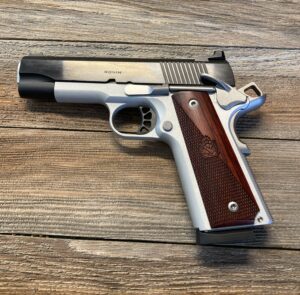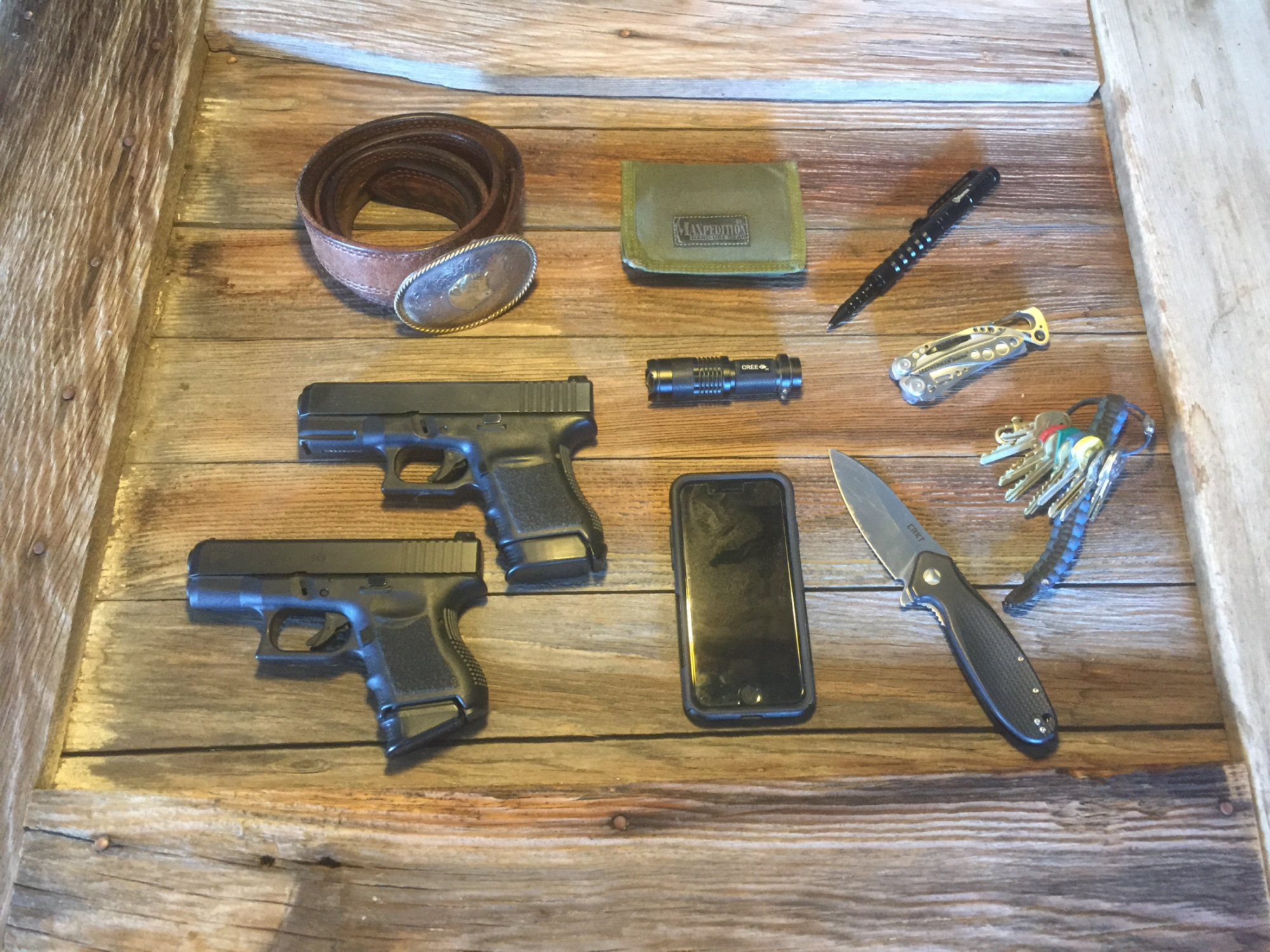This is a difficult question, but one that truly needs to be answered if you get your concealed carry permit. Each one has some pros and cons but you will need to sort that out and figure out which one you will carry, So lets look into this question.
Why Use A Revolver?
 simplicity of operation, and the ability to fire more powerful cartridges than many semi-automatic pistols. A revolver’s straightforward design makes it a dependable choice for self-defense, particularly for new gun owners. Plus they just look very cool!
simplicity of operation, and the ability to fire more powerful cartridges than many semi-automatic pistols. A revolver’s straightforward design makes it a dependable choice for self-defense, particularly for new gun owners. Plus they just look very cool!Reliability:
- Fewer malfunctions: Unlike semi-automatic pistols, revolvers are not dependent on gas pressure to cycle a new round. This means they are less susceptible to jams, failure to feed, or failure to eject.
- No “out of battery” issues: A semi-automatic pistol will not fire if the slide is not fully forward (“in battery”), which can happen if the muzzle is pressed against a target. A revolver’s cylinder design prevents this from occurring.
- A “second chance” on a bad round: If a round fails to fire in a double-action revolver, a user can simply pull the trigger again to rotate the cylinder and get a fresh cartridge. A semi-automatic pistol requires a more complex “tap, rack, bang” drill to clear the malfunction.
- Tolerates neglect better: While semi-automatics tolerate heavy use well, a revolver is more likely to function properly after sitting loaded for long periods without maintenance.
Simplicity of use:
- Simple controls: Revolvers have fewer moving parts and controls than most semi-automatics, which typically have magazine releases, slide stops, and external safeties. Most revolvers simply require the user to pull the trigger.
- No slide manipulation required: People with limited hand strength, such as the elderly or infirm, may find it difficult to rack the slide of a semi-automatic. A double-action revolver requires only a pull of the trigger.
Versatility and power:
- More powerful calibers: The revolver’s simple, rugged design can withstand the pressure of very powerful cartridges, including popular magnum rounds like the .357 and .44 Magnum. These are often too powerful for standard semi-automatic actions.
- Multi-caliber functionality: Many revolvers can fire multiple, less powerful calibers from the same cartridge family. For example, a .357 Magnum revolver can also fire the less powerful .38 Special and .38 Special +P
Recoil:
- In a revolver, once the hammer drops, the bullet exits the barrel, but nothing else moves. The equivalent amount of energy that just went forward with the bullet is also sent backward to your hand. It may “feel” a little different if you have a very heavy revolver, or one of the new polymer revolvers that flex and “absorb” some of the recoil, but the energy is the same. Your hand will feel pretty much the full force of the forward-traveling bullet.
Why Use A Semi-Automatic Handgun?
Semi-automatics can have higher capacity without reloading than revolvers. You’ll see some exceptions, but the basic concept that semi-auto’s use – storing ammunition in the magazine – provides more space for cartridges than the cylinder of a revolver.
than revolvers. You’ll see some exceptions, but the basic concept that semi-auto’s use – storing ammunition in the magazine – provides more space for cartridges than the cylinder of a revolver.
Reliability:
Most modern guns made by reputable manufacturers are reliable. You have to work pretty hard to find a newly manufactured gun from a major manufacturer that is not reliable enough for practical use. You’ll recognize the names, like Smith & Wesson, Ruger, Springfield Armory, Glock, Taurus, Kimber, Colt and many others. One thing I’ve found is that gun manufacturers really want to please their customers, and most provide excellent service.
Recoil:
A given cartridge will have the same “recoil” regardless of whether it’s fired from a revolver or semi-automatic. What does differ is the recoil perception, or “felt recoil.”
With a semi-automatic, a lot happens to dissipate the felt recoil impulse. The energy going backwards is the same, but it feels different. Some is used to move the slide backward against pressure of the recoil spring. Some bleeds off moving the barrel. The whole process of motion in the gun is a little more indirect and drawn out, so that same recoil impulse may “feel” more drawn out than in a revolver.
In general, a semi-automatic of the same power level and weight will generally “feel” like it recoils less than a revolver. Heavier handguns of either style will have less “felt” recoil than ultralight models.
Capacity:
Semi-automatics usually can have higher capacity of bullets than revolvers. You may see some exceptions, but the basic concept that semi-auto’s use – storing ammunition in the magazine – provides more space for cartridges than the cylinder of a revolver. It would be kind of clumsy to have a revolver cylinder that held fifteen rounds or so.
What you need to think about is does capacity matter to you? What kind of use will you have for your handgun?
- Recreation?
- Hunting?
- Home protection?
- Concealed carry?
For many of these uses, capacity may not be a deciding factor. Just because one handgun holds more rounds than the other, that doesn’t mean it’s better?
Short trigger stroke:
There are a few different trigger actions that offer a short stroke:
Single-action only (SAO)
- Trigger feel: The trigger pull is typically very light and has a very short distance of travel.
- Pistol examples: The most well-known SAO pistol is the M1911.
Striker-fired
- Trigger feel: The trigger pull is often consistent and has a shorter travel than a traditional double-action pistol, making it easy to master.
- Pistol examples: Many modern pistols are striker-fired, including Glocks, Smith & Wesson M&P, and SIG Sauer P320.
Double-action/single-action (DA/SA)
- Trigger feel: The shorter, single-action pull allows for very fast and accurate follow-up shots.
- Pistol examples: Beretta 92, CZ 75, and SIG Sauer P226 are common DA/SA pistols.
Complexity:
A semi-automatics pistol may be considered more complex, they generally do have more buttons and levers than a revolver does. Assuming one has already been trained on basic gun operation and safety through professional instruction like the NSSF First Shots program, a revolver is pretty simple. Put cartridges in the holes, close the cylinder and pull the trigger. Semi-auto’s have more steps. For example, after inserting a magazine full of cartridges, one must generally “rack the slide” to load a cartridge from the magazine into the chamber. Many models of semi-auto’s also have safety or de-cocker levers the change the firing status of the gun.
But let’s get real. We live in an age where we learn all sorts of new skills like texting, beaming pictures around the internet and operating the office Keurig machine. Learning the basic safe operation of any handgun, revolver or semi-automatic, is not really a show stopper is it?
So How Do You Choose?
I think the very best way to pick which gun is right for you is to try a few of each type. not just a few rounds but 20-30 rounds in each type. After that you will see which ones work best for you. Some people are more comfortable with revolvers. others are more comfortable with semi-automatics. The most important decision is how comfortable are you with that handgun? If you like it, and are comfortable with it, you’ll shoot it more. You’ll become proficient and confident and that’s what really matters.
Final Comments
OK so it is the moment of truth, which way should you go? It turns out that this is a personal decision that you have to make. There are plenty of good reasons that could make you go either way, but there is not one answer that is correct. It is time to weigh out each option and find out which reasons are most important to you. If you have read my articles then you know which way I would go. The big things that I look at are reliability, ammo capacity and which type of handgun that I shoot better.
If you have any questions about this post or anything related to Everyday Carry (EDC), feel free to leave a comment below and I will be happy to get back to you.
All the best,
Larry
Founder of EDC Essentials
